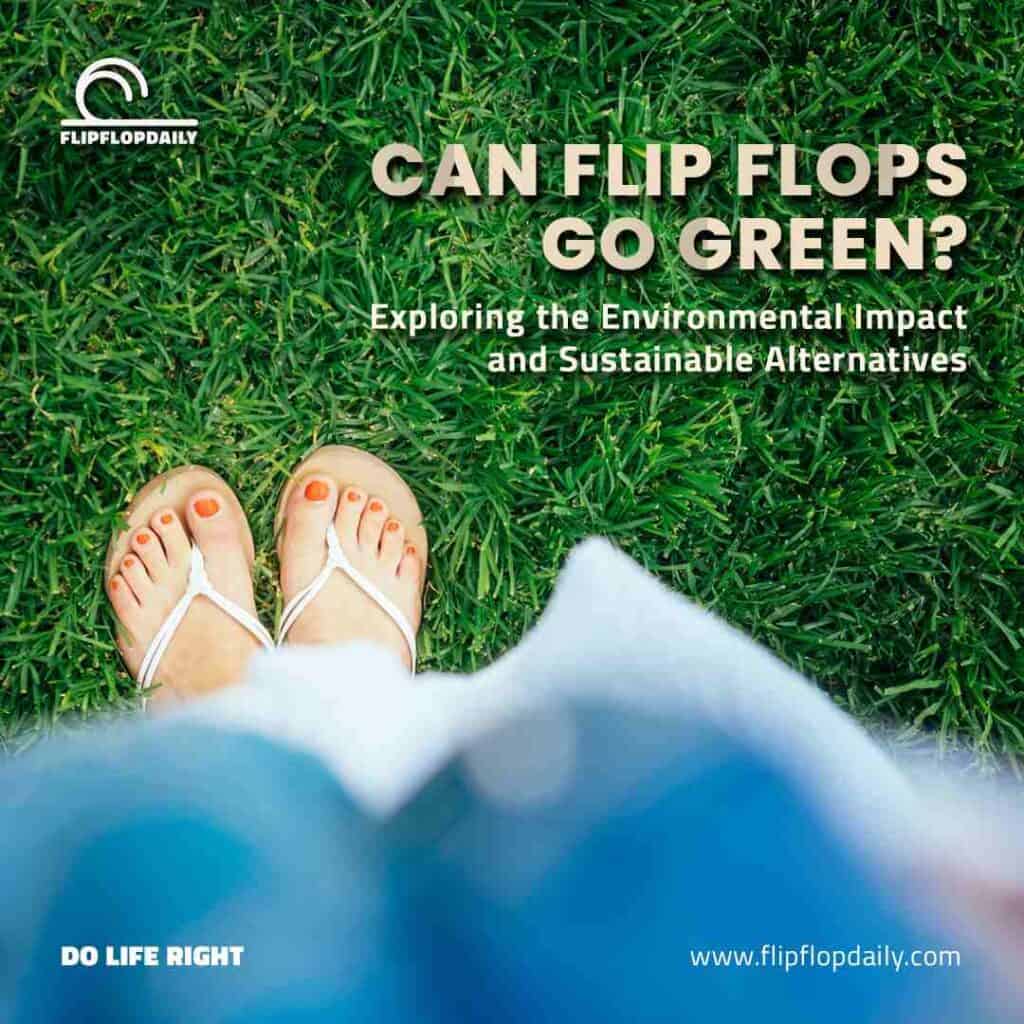If you’re on this site, we know you love the freedom that comes with flip flops, but have you ever considered the environmental footprint they leave behind? In today’s Flip Flop Daily article, we’re diving into the world of flip flops and their surprising impact on our planet. Plus, we’ll introduce you to Sea Sense, a brand that’s making waves in sustainable flip flop fashion. The way flip flops go green.
The Flip Flop Saga: A Brief History
Flip flops, the quintessential summer footwear, have been with us for centuries. From their humble beginnings in ancient Egypt around 1,500 B.C., these sandals have come a long way. The modern plastic flip flop that we adore today found its inspiration in Japanese zori, thanks to American soldiers returning home after World War II.
Why Flip Flops Are a Global Favorite
Why do we love flip flops so much? Well, they’re lightweight, budget-friendly, often waterproof, and available in a kaleidoscope of colors and designs. The perfect choice for a sunny day or a trip to the beach, they’ve earned a spot in nearly everyone’s closet.
In some countries, flip flops aren’t just a fashion statement; they’re a necessity. For many, they’re the only affordable type of footwear available, making flip flops one of the most popular shoe styles worldwide.
The Dark Side: Environmental Impact of Flip Flops
But here’s the flip side (pun intended): Flip flops aren’t great for the environment. Made from plastic foam, they’re far from durable. By summer’s end, most flip flops show noticeable wear and tear or are entirely unusable. This disposability leads to a significant portion of plastic waste, ending up in landfills and littering our lands and oceans.
Plastic takes hundreds of years to decompose in landfills and break down into harmful microplastics in the environment. Marine life faces grave risks when flip flops wash up on shores or get ingested, leading to suffocation, starvation, and drowning. The toxic chemicals used in flip flop production further harm wildlife and ecosystems.
Eco-Friendly Flip Flops: The Solution
Thankfully, strides are being made to create eco-friendly flip flops that can replace their plastic counterparts. Here are some exciting alternatives:
- Biodegradable Flip Flops: Researchers at the University of California, San Diego, have developed a biodegradable flip flop using algae-based polyurethane foam. While not 100% biodegradable yet, they’re a step in the right direction.
- Natural Materials: Brands like Rainbow Sandals use 100% natural hemp fiber for their flip flops. Hemp is eco-friendly and biodegradable, offering proper arch support for your feet.
- Recycled Flip Flops: Indosoles transform old tires into durable flip flops, reducing waste and providing a second life to discarded materials.
- Artistic Recycling: Ocean Sole, based in Kenya, repurposes discarded flip flops into colorful art sculptures, helping to combat flip flop pollution in a creative way.
Flip Flops: The Silent Plastic Pollutant
Did you know that discarded flip flops contribute significantly to plastic pollution? In developing countries, over three billion people rely on flip flops as their primary footwear. When these sandals reach the end of their two-year lifespan, they often become part of the plastic problem, littering beaches and oceans.
Kenya, for example, produces a staggering 100,000 pairs of flip flops daily, many of which end up in the ocean due to inadequate waste management. These discarded flip flops aren’t just an eyesore; they pose health hazards to humans and marine life.
Flip Flops Are Forever… in Landfills
The enduring appeal of flip flops lies in their comfort and durability against the elements. However, this longevity contributes to their environmental impact. Many old, cheap flip flops are made from non-recyclable plastics containing harmful compounds, making them carcinogenic to humans and toxic to wildlife and plants.
But the good news is, these flip flops can still be recycled into useful items such as toys, doormats, and even dog beds.
Making a Sustainable Choice
So, what can you do to make a difference? Consider eco-friendly options when purchasing new flip flops. Sea Sense Flip Flops, for instance, offers biodegradable flip flops made from natural rubber. These sandals won’t harm the environment, and the brand also contributes to cleaning up plastic from polluted rivers and coastlines.
In conclusion, flip flops might be small, but their impact on our planet is substantial. By opting for sustainable choices and supporting brands like Sea Sense, you can help reduce flip flop pollution and protect our beautiful Earth – one step at a time!
It’s time to Do Life Right!
Check out the best flip flop reviews, flip flop advice and flip flop philosophy on how to live a flip flop life!



